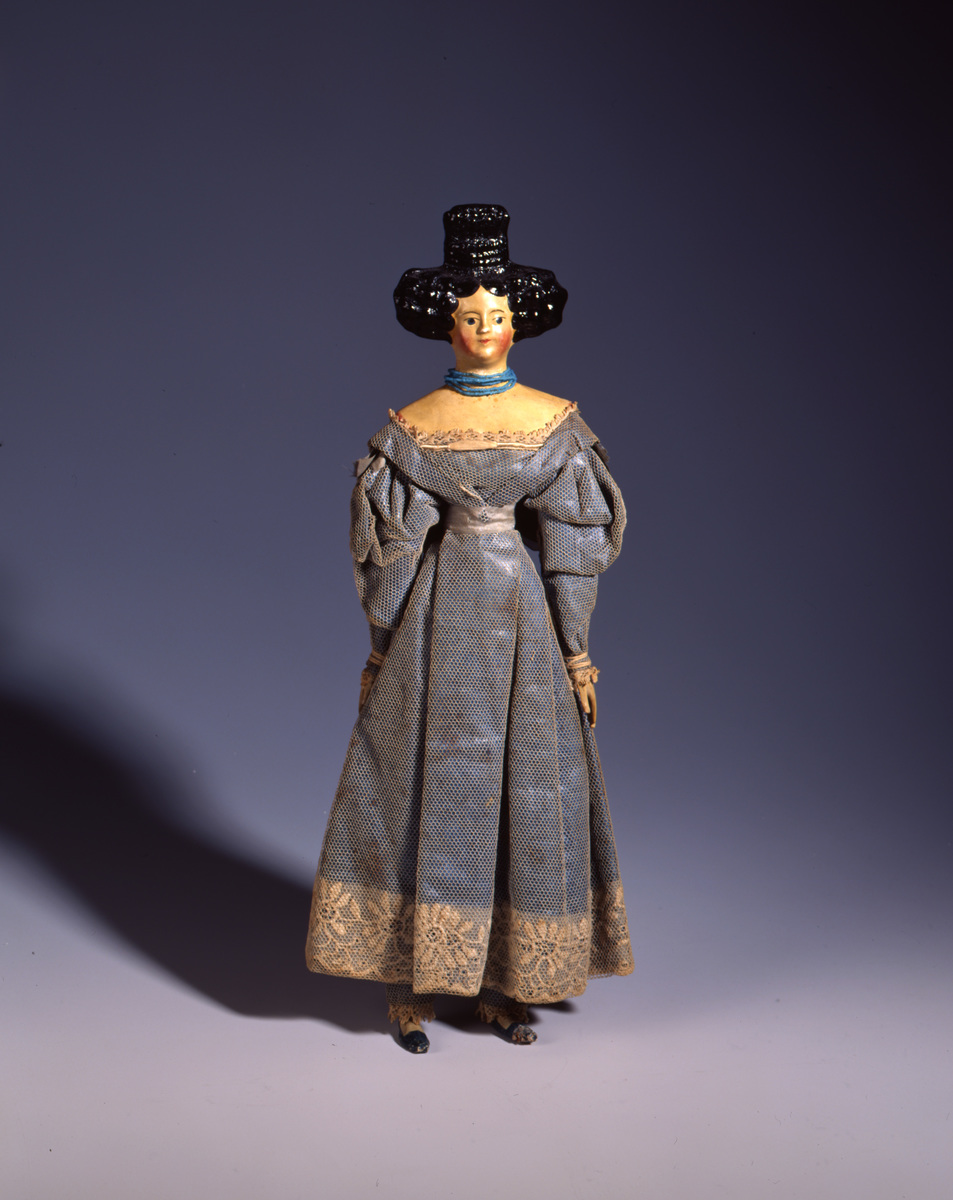Source

Source: Deutsches Historisches Museum, Inv. Nr. AK 99/834
Dolls have featured prominently in many cultures and periods, whether as religious objects or as toys for children. Children’s dolls, particularly those for girls, occupied an important place in the repertoire of toys in nineteenth-century Germany. The doll’s body here (37 cm tall) is made of wood, the head of lacquer-painted papier-mâché rather than porcelain of the type that would become so trendsetting for German and European or North American dolls from mid-century. The doll looks like an older girl or woman in terms of both features and clothing. Examining such an object of material culture can provide insights into contemporary experiences of childhood, into gender ideals distinguishing boys from girls, and into the role of fashion [Mode] at the time. The detailed dress and accessories worn by this doll give a clear sense of women’s fashion in the Biedermeier Era, as waistlines had dropped and become narrower and more form-fitting and necklines had risen, though not yet to the throat itself. The form of the sleeves and decoration could also vary widely to reflect fashion trends from year to year. These changing trends often came out of Paris, which had already established itself as the fashion center of Europe. The extensive use of lace bespeaks a certain claim to affluence.

Source: Deutsches Historisches Museum, Inv. Nr. AK 99/834
© Deutsches Historisches Museum, Berlin